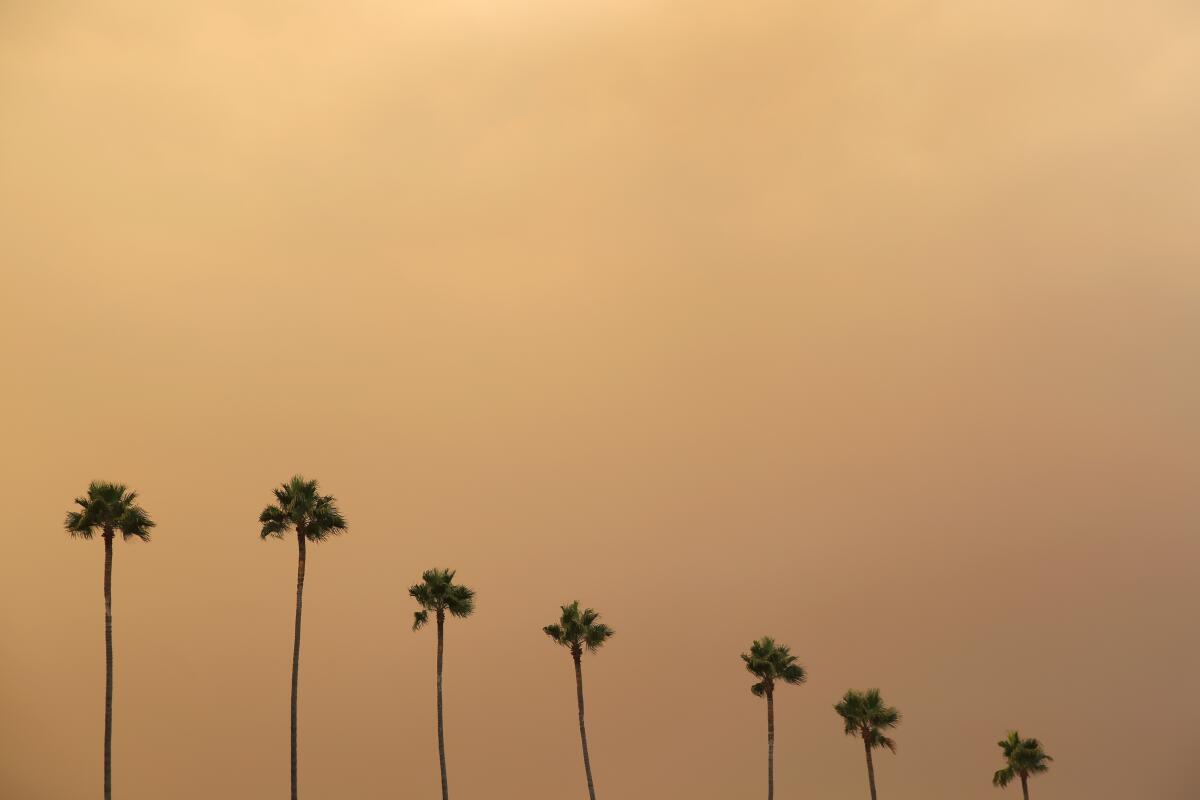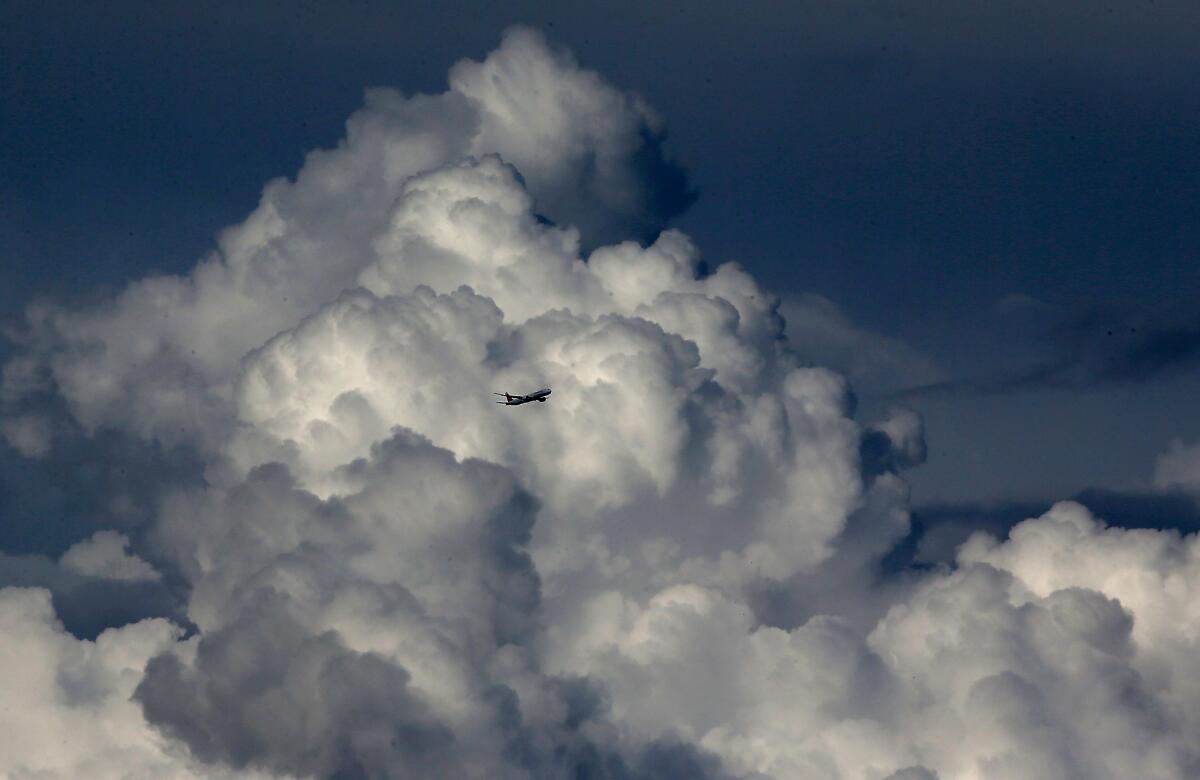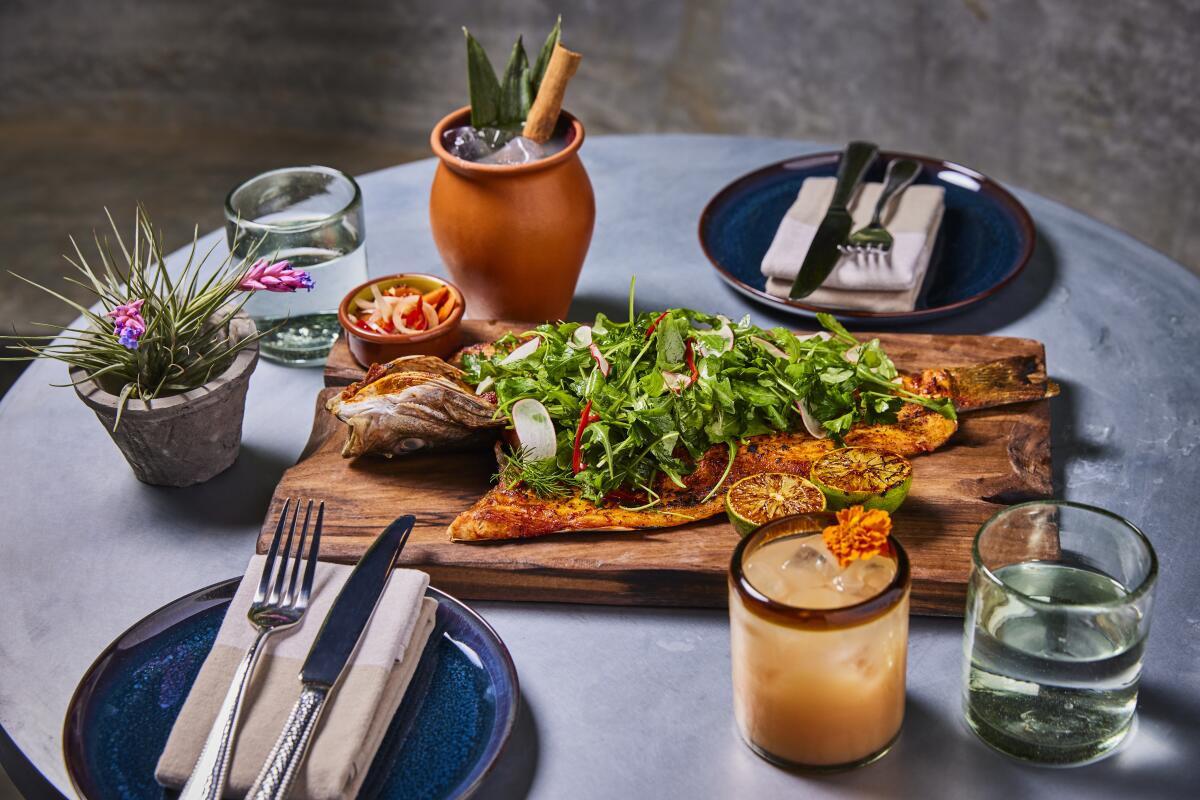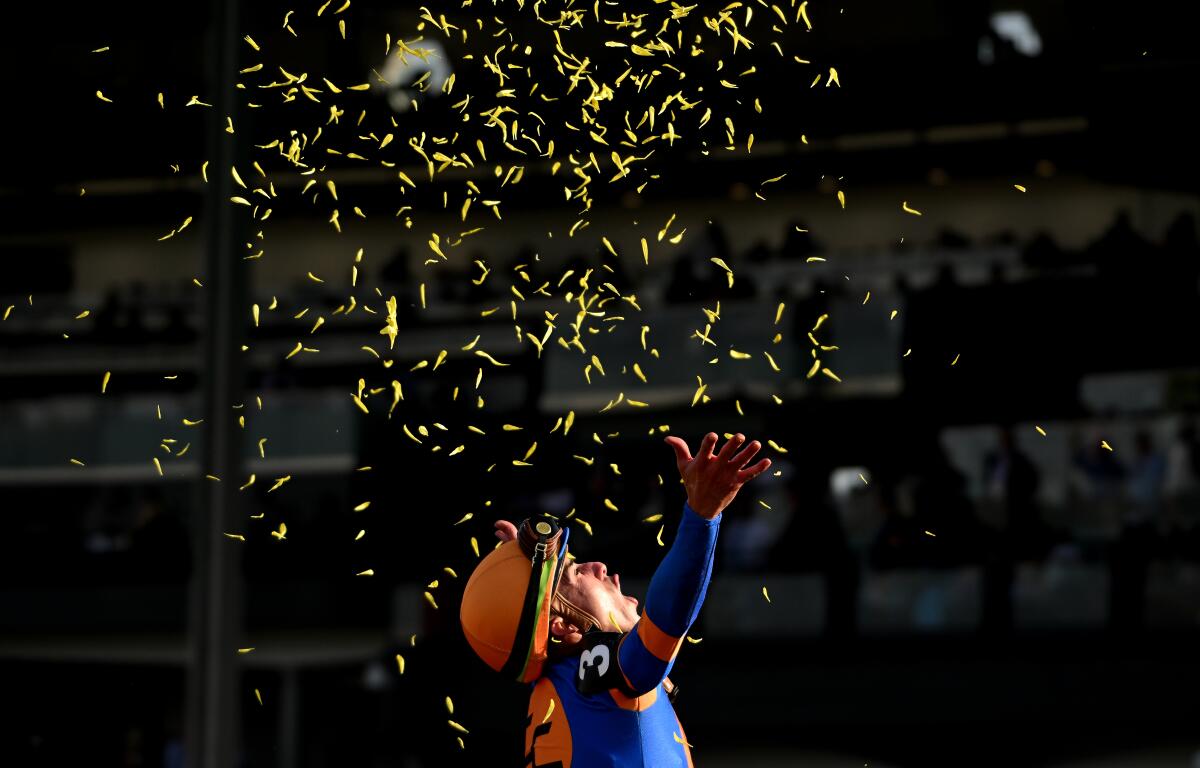Angelenos attempt to answer a 30-year-old question: Is L.A. a hellscape?

Good morning. It’s Wednesday, Dec. 27. Here’s what you need to know to start your day.
- Angelenos attempt to answer a 30-year-old question: Is L.A. a hellscape?
- A tribal bid for federal recognition could pave the way for the L.A. area’s first Indian casino
- Ring in 2024 with 24 fabulous New Year’s Eve and New Year Day meals
- And here’s today’s e-newspaper
Sign up for Essential California
The most important California stories and recommendations in your inbox every morning.
You may occasionally receive promotional content from the Los Angeles Times.
One hell of a question for L.A.
In April 1993, the cover of Time Magazine offered a bleak portrait of Los Angeles: Freeways clogged with cars, violence everywhere and fires burning — all under a well-lighted Hollywood sign.
The cover posed a question: “Is the City of Angels going to Hell?” Inside, reporters paint a picture of a divided city still reeling and rebuilding after the Rodney King beating and subsequent 1992 uprising in response to the acquittal of the LAPD officers who’d beaten him.
“Much of what seemed modern and alluring about Los Angeles now seems terribly shortsighted and ugly,” the article says. “The ethnic patchwork appears to be a map of bunkered enclaves. Its center cannot hold because the city doesn’t have one.”
If it was already hell in the early ‘90s, a lot of people must not have read Time. Census data show that the city’s population grew nearly 12% between 1990 and 2020. Countywide, the population grew about 13% in that time frame. It’s worth noting that there are fewer Angelenos now than there were at the start of 2020 — and fewer Californians (and there are a number of reasons for that).
But depending on which news channel you watch and which politicians you hear, L.A. (and the rest of California) has been packed up in that proverbial hellbound handbasket for years. Poverty, crime, political corruption, police brutality — it’s still what we expect to see in our news headlines and political discourse.
And there’s never a shortage of hellish incidents, stark realities and tragedies that test Angelenos’ faith in their city. And there’s certainly plenty of traffic, so Time was right on the money there.
But 30 years later, L.A. Times reporter Daniel Miller was curious about the question posed on that cover. Are we in hell?
To answer that question, he turned to 17 “prominent Angelenos,” asking them to share their perspectives.
Among those who weighed in were former police and political leaders, chefs, a music journalist, homeless and civil rights advocates, an author, an academic and a Hollywood director.
“There was consensus that this is a fraught time for Los Angeles — nearly every participant mentioned the scourge of homelessness when contemplating the issues affecting the city,” Daniel noted in his story. “That’s in stark contrast to the 1993 Time story: Homelessness wasn’t mentioned. Even once.”
Here are some of their insights that stood out to me. Be sure to read Daniel’s full story to explore more of what they shared.
Wendy C. Ortiz, author and essayist:
“All cities encompass both heaven and hell. …There are going to be more interesting characters in hell than in heaven. And Los Angeles is the hell I’ve chosen.”
Bernard Parks, former LAPD chief and city council member:
“In terms of local politics, local government and the City Council, we may not be in hell but we are close enough to it to where you can feel the heat and smell the smoke. … There is little that gives you the sense that there are a large number of people in positions of authority looking to go in a different direction.”
Andy Bales, homeless advocate and chief executive of Union Rescue Mission:
“Homelessness is hell. There is no suffering like hoping the sun comes up so that you don’t shiver anymore, or hoping that you can find a restroom before you get a urinary tract infection. We have really let people down, and we can do so much better.”
Brenda Stevenson, UCLA professor:
“When we look at the Black population in Los Angeles 30 years later, we still see a very large and disproportionate number of people incarcerated. The largest proportion of unhoused people are Black. … I am always hopeful for improvement in L.A. — and I do think it is in a better place than it was in 1993.”
Father Greg Boyle, founder of Homeboy Industries:
“Anybody who suggests we haven’t made progress isn’t paying attention. Because there is no comparison. … My hope is that we now have a broader sense of trauma, mental health, poverty and despair — all the things that impact behavior. … [Gang violence] is the language of people who are stuck in despair.”
Maria S. Salinas, president and chief executive of the L.A. Area Chamber of Commerce:
“Thirty years ago, I was working at Rebuild L.A., the organization that came together after the 1992 uprising to help aid the city’s restoration. … That moment in time just showed the determination of Angelenos to engage diverse voices to come together to address challenges. I remember thinking, the residents of Los Angeles are resilient and care deeply about their city and they will not let this city fail.”
John Carpenter, film director, writer and composer:
“We live on the edge. It makes us feel special about ourselves. It’s ridiculous because at any moment we could topple over — topple over into doom. That’s L.A. for you — there’s nothing like it.”
Today’s top stories

Climate and environment
- Another storm is coming to Southern California. Could it rain on the Rose Parade?
- Venomous snakebites kill thousands every year. A California doctor may have a solution.
- Their land is sinking. But Tulare Lake farm barons defy calls to cut groundwater pumping.
Health
- A new coronavirus variant may be behind California’s COVID rise.
- Everyone seems to be sick with respiratory illness in California. Here’s why.
- Medi-Cal will soon be open to all, “papers or no papers.” This Los Angeles woman wants her neighbors to know.
- Your favorite hot chocolate mix could contain high amounts of lead.
Politics
- Many leading California Democrats have been clamoring to jettison Donald Trump from the state’s election ballot, but Gov. Gavin Newsom has made it clear he is against the move.
- Trump says he will never stop trying to repeal Obamacare. California would feel the biggest impact.
- Fears of violence and memories of civil war haunt L.A. Salvadorans over El Salvador President Nayib Bukele’s reelection bid.
More big stories
- A tribal bid for federal recognition could pave the way for the L.A. area’s first Indian casino.
- A new law has Californians with criminal records ‘quite hopeful’ they’ll finally find housing.
- An ‘invisible’ need: Diapers top the holiday wish list for many L.A. parents.
- Hopes dim for a cease-fire as Israel vows to continue war.
- Metrolink service will be closed through Friday for maintenance and enhancements.
- After a years-long fight, an ex-sheriff agrees to comply with subpoenas and testify on deputy gangs.
- The Navy awards a $6-million contract for cleanup of the World War II hangar in Tustin that burned.
Get unlimited access to the Los Angeles Times. Subscribe here.
Commentary and opinions
- Commentary: For all of its joy, “The Color Purple” is also a chance to talk about Black women and intimate partner violence.
- Opinion: Ukrainians will fight Russia no matter what. But this is what they need to win.
- Helene Elliott: When dealing with NBA’s elite, the Lakers still fall short.
- Anita Chabria: In L.A., a new vision of incarceration proves rehabilitation works.
- Michael Hiltzik: Mickey Mouse and “Lady Chatterley’s Lover” enter the public domain on Jan. 1, a reminder of our crazy copyright laws.
- Brian Merchant: What tech would we be better off without? I asked, you answered.
- Mark Z. Barabak: Newsom loves Trump? Not at all. But he made the right call on ballot access.
Today’s great reads
California horse racing is at a crossroads. Can it survive? The closure of Golden Gate Fields is just one problem California horse racing faces. Non-competitive purses and a sinking foal crop paint a tough picture.
Other great reads
- Time to get real on the bullet train: California is building it, so let’s make it work.
- How we celebrate the holidays: Abuelita’s Guate tamales, NYE rituals and more Latino traditions.
- The year that killed L.A. restaurants: Here are more than 65 notable closures from 2023.
How can we make this newsletter more useful? Send comments to essentialcalifornia@latimes.com.
For your downtime

Going out
- 🦪 Ring in 2024 with 24 fabulous New Year’s Eve and New Year Day meals.
- 🌮 The best dishes of 2023, according to our food writers.
- 🧘🏽 Need a boost of vitamin D? Here are 9 outdoor yoga classes to try this winter in L.A.
Staying in
- 📚 9 books to read during the holidays by Latinx authors.
- 📖 From endangered to cuddly to “pests”: What “The Age of Deer” says about the human mind.
- 🍗 Here’s a recipe for chicken curry.
- ✏️ Get our free daily crossword puzzle, sudoku, word search and arcade games.
And finally ... a great photo
Show us your favorite place in California! Send us photos you have taken of spots in California that are special — natural or human-made — and tell us why they’re important to you.

Today’s great photo is from Times photographer Wally Skalij, and is part of our biggest L.A. sports moments in 2023 story. Pictured is jockey Irad Ortiz Jr., celebrating aboard White Abarrio after winning the Breeders’ Cup Classic at Santa Anita Park in November.
Have a great day, from the Essential California team
Ryan Fonseca, reporter
Kevinisha Walker, multiplatform editor
Laura Blasey, assistant editor
Check our top stories, topics and the latest articles on latimes.com.
Sign up for Essential California
The most important California stories and recommendations in your inbox every morning.
You may occasionally receive promotional content from the Los Angeles Times.





